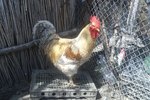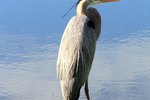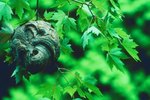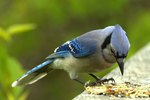
The name “seagull” is often used to describe any loud, gray and white bird found near the sea; however, at least 28 different subspecies of seagulls (members of the scientific family Laridae) are found throughout the world. Known to birding enthusiasts as “gulls,” there’s more to these seabirds than scavenging and making noise, as their perpetuating stereotype suggests.
Physical Characteristics
Seagulls range in size from small to large. The larger great black-backed gull (Larus marinus) grows to an average 27 inches, while the little gull (Larus minutus) is around 11 inches, or roughly the size of a blackbird. Larger gulls typically have long, pink legs, and medium or small gulls have yellow, black or red legs. Certain seagull subspecies are difficult to identify. A juvenile gull’s plumage constantly morphs from varying shades of patterned browns before settling into its mature coloration -- gray, white and black. During mating season, most adult seagulls change colors -- head feathers commonly change to either bright white or dark brown.
Habitat and Range
Seagulls permeate coastal regions all over the world. They’re found off the coast of North America, northern Europe, Russia, Japan and China. They also inhabit inland waterways, agricultural areas and even landfills. As scavengers, gulls follow food sources, sometimes choosing to build nests and breed near areas of waste like landfills and coastal towns to secure their next meal. Once a gull has established a breeding site, it will return year after year.
Diet
A seagull’s natural diet consists of fish, marine invertebrates, worms, bird eggs, insects and rodents. However, gulls are opportunistic feeders who take advantage of almost any food source. They are known to feast on discarded food, gardens and waste dumps. Feeding wild gulls only perpetuates the notion of gulls as “pests” begging for food. It’s important to properly discard all trash and food waste when in the seagull’s environment.
Reproduction
Gull mating season occurs in April and May. Pairs of gulls court each other in early April and females build their nests out of straw, grass, twigs and paper and lay two or three eggs in early May. Average incubation is three weeks, at which point the infant chicks hatch around the beginning of June. Gull chicks grow rapidly, and are ready to fly by August. They will reach full sexual maturity in three years. The average life expectancy for most seagulls is between 15 and 20 years.
References
Photo Credits
-
Karl Weatherly/Photodisc/Getty Images
Writer Bio
Christina Stephens is a writer from Portland, Ore. whose main areas of focus are pets and animals, travel and literature. A veterinary assistant, she taught English in South Korea and holds a BA in English with cum laude honors from Portland State University.




